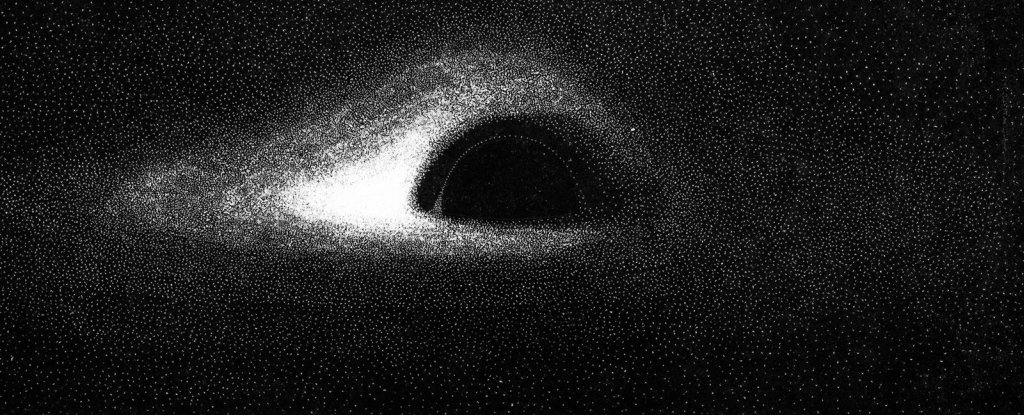I’ve been asked many times whether I have ever photographed a black hole, and my answer has always been that it’s not possible to photograph a black hole. That’s technically correct, since no light (or other electromagnetic energy) can escape a black hole. However, it is theoretically possible to capture an image of the “event horizon” around a black hole, and very soon we will all be able to witness the results of that theory put into practice.
The above image is a computer simulation of such an event horizon, generated back in 1978 by a fellow with the ironic name of Luminet. If you saw the movie Interstellar you may recognize this form, since the depiction of a black hole in that film was based on a similar simulation – with some artistic liberties. But on April 10th, 2019, an image produced by the Event Horizon Telescope (EHT) showing an actual image of an event horizon is expected to be released. More specifically, the black hole in question is Sagittarius A*, the supermassive black hole at the center of our Milky Way Galaxy, and the image was captured using an array of radio telescopes all over the world (so the image is real, but not representative of visible light). The idea behind EHT and other such telescope arrays is that by processing data from widely scattered points you get the effective resolution of the full separation between them. In other words, the telescope is effectively as large as Earth, almost. On a smaller scale, the same idea is used to make optical telescopes using multiple mirror segments rather than a single, large mirror. In this case the “mirrors” are extremely small compared to the distance between them, which means that the sensitivity is relatively low, but angular resolution can be extremely high.
The technique used by EHT is referred to as “Very Long Baseline Interferometry” (VLBI). Radio signals are collected from the radio telescopes around the world, along with incredibly precise timing information. After compensating for the time delay differences between Sagittarius A* and the various locations on Earth, the interference patterns between them can be constructed into an image. It takes a huge amount of data, and thus a huge amount of processing, to produce such an image. In fact, the radio telescopes collect so much information that it is not practical to transmit it by conventional means to the central processing site. Instead, disk drives full of data are physically transported to the MIT Haystack Observatory in Massachusetts and the Max Planck Institute for Radio Astronomy in Germany. Processing is performed by a grid array of 800 processors connected to each other with a 40 Gb/sec network. I don’t know how long it takes to process the data, nor how long the effective “exposure” was, but scientists, amateur astronomers, and all sorts of curious people are waiting anxiously to see the image.
To add to the fun, here is a piece from my favorite comic strip, xkcd.com, about EHT: https://imgs.xkcd.com/comics/eht_black_hole_picture.png
